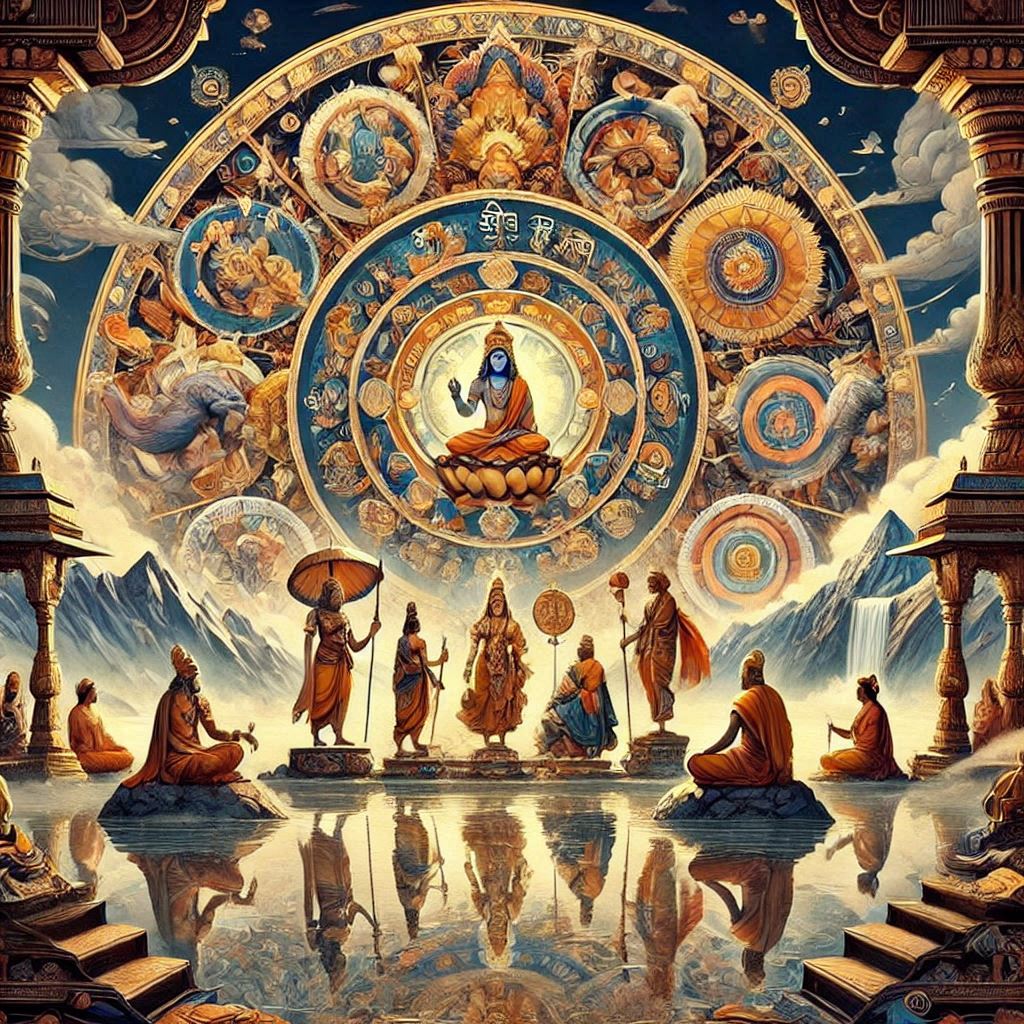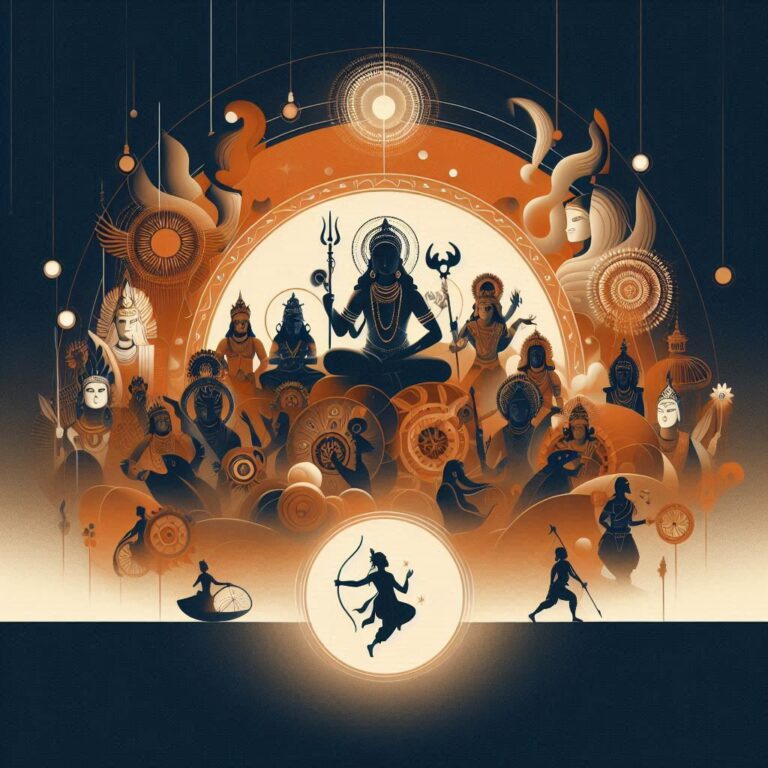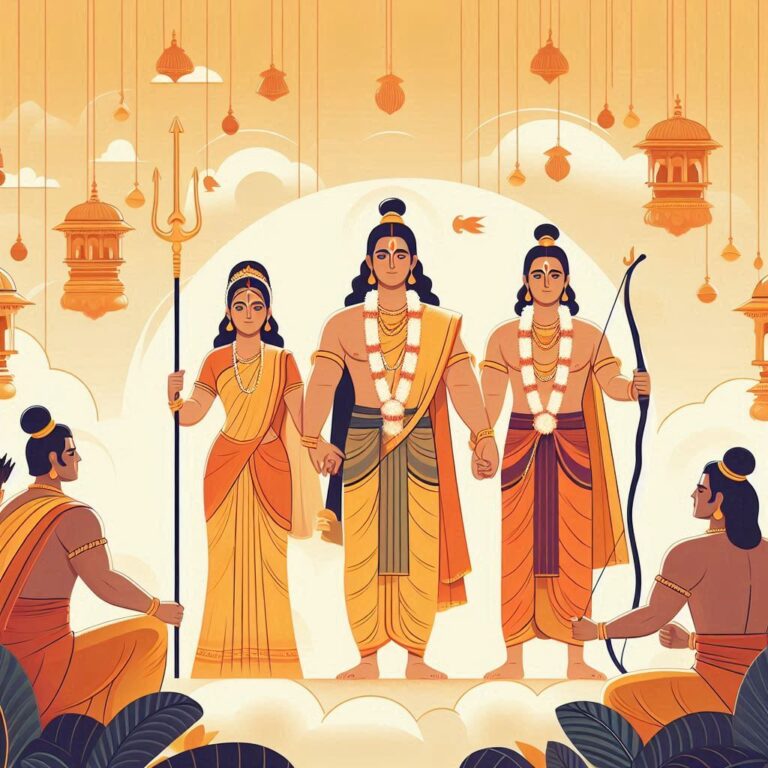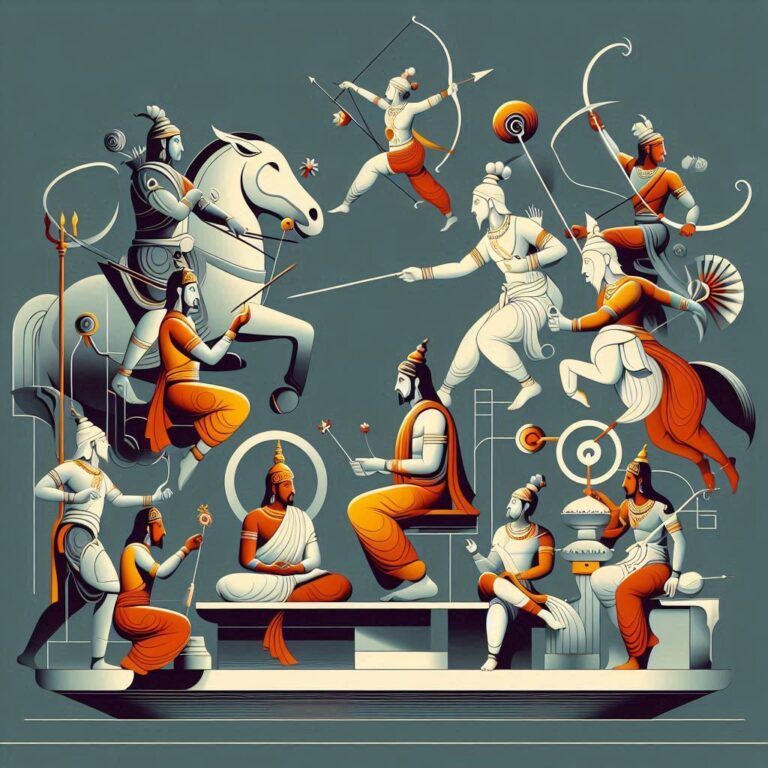Sanskrit Ramayan: Essential Text and Its Cultural Significance
The Ramayana in Sanskrit: Unveiling the Original Text and Its Significance
When we think of epic tales that transcend time and culture, the Ramayana invariably comes to mind. This ancient Indian epic, attributed to the sage Valmiki, is more than just a story—it’s a rich tapestry of values, teachings, and cultural wisdom that has shaped the ethos of billions across the globe. In this article, we’ll dive deep into the essence of the Ramayana in its original Sanskrit form and explore its profound importance in today’s world.
Understanding the Ramayana
What Exactly Is the Ramayana?
Imagine a world where gods and humans interact; where duty (dharma) battles chaos (adharma); and where love, valor, and devotion are intertwined in a narrative filled with lessons and morals. The Ramayana tells the story of Lord Rama—an avatar of Vishnu—who embarks on a journey to rescue his wife, Sita, from the demon king Ravana. Beyond its narrative, the Ramayana is a philosophical treatise encompassing ethical dilemmas, the nature of righteousness, and the ideal form of relationships, be it familial, societal, or divine.
The Original Sanskrit Text
Written in exquisite Sanskrit, the beauty of the Ramayana lies not just in its story, but also in its poetic form. Valmiki’s verses create a rhythmic flow, emphasizing the emotional depth and the gravity of the events depicted. The Sanskrit text is composed of several ‘kandas’ (books), with each segment unraveling different aspects of life and dharma.
Some notable sections include:
- Bala Kanda: The childhood and virtues of Rama.
- Ayodhya Kanda: The trials faced by Rama and his family.
- Aranya Kanda: The adventures in the forest.
- Kishkindha Kanda: The alliance with the monkey king, Sugriva.
- Sundara Kanda: Hanuman’s daring journey to Lanka.
- Yuddha Kanda: The great battle against Ravana.
- Uttara Kanda: The life after victory and moral ramifications.
Why Is the Ramayana Important?
You might wonder, “What’s the big deal about an ancient text?” Well, let’s unpack that!
1. Cultural Identity
The Ramayana is the cornerstone of cultural identity for millions. It’s not just a story about gods and demons; it embodies the values, struggles, and aspirations of a civilization. In many ways, it’s like a mirror reflecting our moral compass.
2. Ethical Framework
Imagine living in a world with no sense of right and wrong. The Ramayana serves as a guiding light for ethical behavior. It teaches us about duty, responsibility, and sacrifice through the actions of its characters. Rama’s unwavering commitment to truth and justice is a model for personal conduct.
3. Spiritual Insights
For those on a spiritual quest, the Ramayana is a treasure trove. It delves into concepts like karma, dharma, and the essence of devotion (bhakti). When we read Valmiki’s verses, we’re not just indulging in a tale; we’re connecting with a philosophy that transcends religion.
4. Linguistic Appreciation
The Sanskrit of the Ramayana is a poetic marvel! The language intricately weaves emotions, metaphors, and cultural nuances. Understanding its original text not only enhances literary appreciation but also provides insight into the historical context in which it was written.
5. Artistic Inspiration
Countless works of art, dance, and drama are inspired by the Ramayana. From classical dances like Kathakali to plays and contemporary adaptations, the epic continues to influence creative expressions across various forms.
The Ramayana: A Bhakti and Literature Bridge
Let’s not forget the beautiful transition of the Ramayana from pure literature to a devotional scripture. Various devotional poets, like Tulsidas, have taken the essence of Valmiki’s work and infused it with bhakti (devotion). Tulsidas’s rendition, the “Ramcharitmanas,” while different in style, echoes the same values and stories, making it accessible to the masses through regional languages.
The Language of Ramayana: Poetry and Rhythm
Here’s where it gets exciting! The Ramayana is loaded with poetic techniques. Alliteration, metaphors, and similes flow through the text, creating an enchanting reading experience. Just like how music flows through our veins and resonates with our emotions, the cadence of the Ramayana captivates our minds and hearts.
Insights Through Dohas and Shlokas
To further enrich our understanding of the Ramayana, let’s explore some profound dohas and shlokas that echo its wisdom:
Dohas
-
दोहा 1:
धरिणी धृते नैकिदु प्रकटति रघुवीर।
Dharini dhrite naikidu prakatati Raghuveer.
Translation: “The Earth holds firm as the valor of Raghurama manifests.” -
दोहा 2:
राम नाम महा बीर।
Ram naam maha beer.
Translation: “The name of Rama is the greatest strength.” -
दोहा 3:
परित्राणाय साधूनां विनाशाय च दुष्कृताम्।
Paritraanaya saadhunam vinaashaya cha dushkrtamam.
Translation: “To protect the righteous and to destroy the wicked.”
-
दोहा 4:
सिया राम मय सब जग जानी।
Siya Ram maya sab jag jaani.
Translation: “The entire world recognizes the essence of Sita and Rama.” -
दोहा 5:
राम मुस्कान धर्म है, जो कोई प्रेम करे।
Ram muskaan dharm hai, jo koi prem kare.
Translation: “The smile of Rama is Dharma for all who love.”
Shlokas
-
श्लोक 1:
कौसल्याच येषां कृते।
Kausalyach yesham krute.
Translation: “For whom Kausalya (Rama’s mother) bore the child.” -
श्लोक 2:
यं वैकुण्ठे विनाशकृत्प्रभवति मुरारिपाद निह्नाति।
Yam Vaikuntha vinashakut prabhavati Murari pad nihnati.
Translation: “He whose feet, even in Vaikuntha, vanquish the demon Murari.” -
श्लोक 3:
सर्व क्षेत्रज्ञः सर्वशक्तिमान सदा कत्र्तवे न च हि गतः।
Sarva kshetragnah sarva shaktimaan sada krittave na cha hi gatah.
Translation: “All-knowing, omnipotent, eternally dutiful and never to depart.”
-
श्लोक 4:
विवस्वं पूषं प्रथं च यजमानं नमाम्यहम्।
Vivasvan pusham prvam cha yajamanam namamyaham.
Translation: “To the initial giver of light and nourishment at the altar, I bow.” -
श्लोक 5:
पर्यायन्ति महौषधयः प्राज्ञैर्विना धात्वा न च अगच्छति।
Paryayanti mahuṣadhayah prajñair vina dhatva na cha agacchati.
Translation: “Great herbs regained their vigor, yet without wise thought, do not advance.”
Conclusion
As we wrap up our exploration of the Ramayana, it’s clear that this epic is far more than ancient literature. Its essence echoes through ages, teaching us about life, ethics, and spirituality. Whether you approach it for its storytelling, moral teachings, or spiritual insights, the Ramayana remains a bastion of wisdom that continues to inspire. Embracing the original Sanskrit text uncovers beautifully intricate layers that enrich our understanding of this timeless tale.
So, what’s your reason for delving into the Ramayana? Would you approach it for the lessons, the language, or simply as a captivating story? Whichever it may be, the Ramayana welcomes you with open arms!
FAQs
1. What is the significance of the Ramayana in modern times?
The Ramayana offers valuable lessons on duty, ethics, and devotion, making it a relevant guide for navigating contemporary life.
2. How can one approach reading the Ramayana in Sanskrit?
Begin with a good translation alongside the original text, perhaps starting with popular kanda (books) that resonate with you.
3. Are there different versions of the Ramayana?
Yes, various adaptations exist, including Tulsidas’ Ramcharitmanas in Hindi, Kamban’s Tamil version, and even modern retellings in different mediums.
4. What is the primary teaching of the Ramayana?
Central themes include the importance of dharma, love, loyalty, and the moral complexities faced by individuals.
5. Can the Ramayana be understood purely as a historical text?
While it holds historical context, the Ramayana transcends history, serving as a moral and philosophical document relevant across ages.








